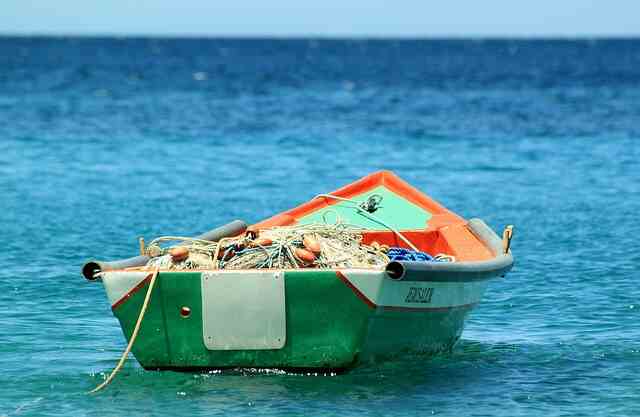Introduction:
The Small Craft Advisory (SCA), which functions as a distinctive safety signal, directs boaters away from potential hazards in the vast and unpredictable ocean. Despite its simplicity, this weather alert is quite important and urges small boat owners to prioritize their safety.
In the immensity of unfamiliar waters, the Small Craft Advisory (SCA) acts as a reliable lighthouse, warning sailors of approaching danger. The straightforward message of this weather advisory emphasizes how important it is to prioritize the safety of small boat owners.

The Small Craft Advisory (SCA) serves as a trustworthy lighthouse, steering mariners clear of danger in the huge ocean of the unknown. This simple weather warning is really important and urges small boat owners to put their safety first.
What is a Small Craft Advisory?
Imagine being accompanied by a dependable weather bodyguard while you traverse the sea. The Small Craft Advisory accomplishes just that. Meteorologists issue this specific warning when weather conditions become dangerous for smaller boats and vessels. It warns boaters about potential dangers like strong winds, massive waves, and unpredictable weather that can seem safe on land but can cause havoc at sea.
What Makes the Small Craft Advisory Special?
Imagine a persistent guardian angel keeping an eye on you while you negotiate the waves. The Small Craft Advisory excels in that capacity. It is a unique weather alert designed for smaller boats and other ships in mind. This alert is issued when the weather becomes dangerously choppy and warns boaters of potential threats such as strong winds, high waves, and unpredictable weather. It stands out because of its constant commitment to the security of smaller vessels, which makes it a unique and indispensable tool for maritime enthusiasts.
Criteria for Issuing a Small Craft Advisory
The particular criteria for issuing a small craft alert may vary slightly depending on the region and body of water being monitored. The National Weather Service, however, largely focuses on wind and wave speed.
When sustained winds could reach or surpass 25 knots (approximately 29 miles per hour) or when seas could reach or surpass 5 feet, the National Weather Service would issue a small craft advisory. These circumstances are challenging, but they do not meet the standards for more hazardous advisories, such as gale warnings or storm warnings. It’s vital to remember that these thresholds can change depending on the geographical area, such as the Great Lakes, the Gulf of Mexico, or the Atlantic and Pacific coasts.
The Small Craft Advisory’s Boater Safety Recommendations: Sailing with Confidence

With careful consideration of the various wind and wave conditions that can affect smaller vessels on various water bodies, the Small Craft Advisory establishes exact standards to safeguard boaters and water sports enthusiasts. Boaters can cruise the waterways with greater security and comfort by following this helpful safety advice, giving them the ability to make decisions about their aquatic experiences.
In order to navigate the waterways with assurance and peace of mind, heed the advice of the Small Craft Advisory. Let its safety recommendations serve as your dependable compass to help you navigate the tides safely and without incident. Set sail on amazing adventures on the high seas with these insights by your side, knowing that safety
Why is it important to follow?

Beyond mere advice, the Small Craft Advisory provides the key to stress-free boating. You can avoid potential calamities and sail with unflinching confidence by paying attention to its advice. Ignoring this wise counsel could have unwanted effects and turn a relaxing day on the water into a stressful ordeal. Accepting its simplicity helps you experience the thrill of unforeseen experiences on the waves.
Increase Safety Precautions in Preparation for the Small Craft Advisory
Prior to setting sail, thoroughly consider the significance of your journey and any potential risks. It might be a good idea to delay or reschedule your trip until the weather becomes better.
Recognize the Small Craft Advisory’s Importance:
Recognize the importance of the Small Craft Advisory in protecting seafarers and small craft. It gives you advance notice of potentially hazardous weather conditions so you can take the necessary precautions.
Update Safety Equipment:
Before setting out on your excursion, make sure that all safety equipment, including communication devices and life jackets, is in flawless operating order. Put your safety first above all else.
Personal Floatation Devices Are Required for Every Passenger:
All passengers must be required to wear appropriate Personal Flotation Devices (PFDs). In the event of unanticipated emergencies, this straightforward act can save lives.
Find Shelter:
If you’re already on the water when the Small Craft Advisory is issued, you might want to look for protected anchorages, marinas, or safe harbors to weather the bad weather. Be mindful of the accessibility and distance to acceptable shelter choices.
Keep Watch:
Keep a watchful eye on changes in wind direction and speed, wave heights, and other meteorological aspects of the weather. Be aware of any nearby marine dangers, such as shoals or reefs, which may be harder to navigate due to the current weather.

FAQs
What is a “Small Craft Advisory” (SCA)?
Small Craft Advisory, or SCAs, are weather warnings that inform boaters of potentially dangerous sea conditions for smaller craft.
What precisely are the “Small Craft Advisory” specifications?
Wind speed, wave height, and other unfavorable weather conditions that could endanger small vessels are often taken into consideration when deciding whether to issue a small craft alert.
Who published the Small Craft Advisory?
The National Weather Service and other meteorological agencies issue the Small Craft Advisory to inform boaters about potential dangers on the
How does the SCA benefit boaters?
Boaters can utilize the SCA to gather helpful data that will help them make decisions about whether to venture out on the water or find a safe location to stay during terrible weather.
Is the SCA consistent throughout all regions?
The particular SCA requirements may vary slightly depending on the region and the aquatic body being monitored. In various locations, there might be a variety of thresholds for giving advice.
Can SCA save lives?
By warning boaters about dangerous conditions, preventing crashes, and encouraging safety precautions, the SCA can actually save lives.
What are the SCA’s most crucial safety recommendations?
wearing personal flotation devices (PFDs), maintaining current safety equipment, and staying informed about potential risks on the water.
What actions should boaters take during the SCA?
Boaters should reevaluate their plans, consider postponing trips if necessary, seek proper shelter if already on the water, and stay aware of changing weather conditions.
Is the SCA only for recreational boaters?
No, the Small Craft Advisory is relevant to all small watercraft operators, including recreational boaters, sailors, kayakers, fishermen, and anyone else venturing out on smaller vessels.
Where can I obtain information on SCAs?
You can consult the US Coast Guard’s Coastal Warning Display program to learn more about Small Craft Advisories (SCAs). Display flags are used in this application to warn of various weather conditions, such as SCAs, gale warnings, tropical storm warnings, storm warnings, hurricane alerts, and hurricane-force wind warnings, at specific small boat stations.
You can rely on alternative sources like NOAA Weather Radio and continuous weather broadcasts that cover coastal areas of the mainland United States, Alaska, Hawaii, and the Mariana Islands even if the Coastal Warning Display program had several drawbacks and has been deemphasized. These broadcasts cover these areas and more. For mariners, these sources offer more detailed and current weather information.

Conclusion
Your safety takes first when the Small Craft Advisory is in force. Spend some time reviewing your boating plans with an emphasis on safety. If necessary, think about delaying your trip, and if you’re already on the water, find appropriate cover. Always keep a close watch on your surroundings. You may ensure a safer and more enjoyable boating experience, even in bad weather, by adhering to this straightforward yet unique advice. Remember that taking precautions during the advisory can result in less trouble and more memorable boating experiences.



